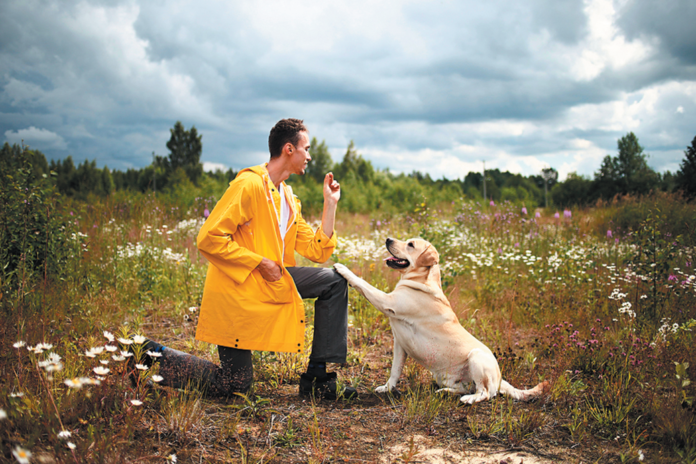”When I first became a veterinarian, I didn’t really pay attention to what word I was using to describe training dogs and other animals,” says the head of the Tufts Animal Behavior Clinic, Stephanie Borns-Weil, DVM. “I was used to thinking of words we say to dogs as ‘commands’ — you tell your dog to do something, and they do it.
“But what I then learned,” the renowned behaviorist says, “is that the language we use both reflects and shapes our thinking. It made me reevaluate certain terms: what does ‘command’ really mean?”
“Command” assumes we have dominance over a dog, she says. “It reflects a very hierarchical relationship.”
It’s true that the relationship between people and their dogs is not mutual, Dr. Borns-Weil comments. “It’s not like two adult humans. There’s a caregiving aspect, just as there is between adults and children. But the word ‘command’ doesn’t allow for any kind of mutuality and respect. It doesn’t allow for agency of the animals themselves. It implies ‘Do it or else.’”
Why “Cue” works better to inform your training
“Cue” implies learning, Dr. Borns-Weil says. It implies that there’s a choice. “I believe in giving an animal as much choice as possible,” she says. “We’re not going to give them the choice to run across the road because they don’t see the consequences of their behavior. But we can guide the choices they do have in constructive ways. We can teach them that their actions can result in a reward or no reward.” That then becomes their choice rather than our order.
Approaching it this way also has the capacity to positively reinforce us for using the best training methods, Dr. Borns-Weil says. “It teaches us how to communicate with our dogs not only in the most respectful and loving way but also the way that is most effective.”
Dogs learn best through a cooperative relationship in which we give a cue, they respond, and then we give a reward. “Cue, response, reward training is empowering for all of us,” the doctor comments. “If your dog doesn’t follow a cue, he may not understand what you are asking. Try breaking down the task into smaller pieces.” Also remember that context is everything for dogs. He may not know that a cue such as “Sit” that is learned in class also applies at home.
“Think of a missed cue as a breakdown in communication,” Dr. Borns-Weil says. “It’s no longer, ‘the dog won’t heed my command and is bad.’ It’s ‘how do we bridge the communication gap?’”






It’s important, however, to be firm about what you expect of the dog. The key is not to expect more of the dog than you have trained him to do. If the dog misbehaves, it’s either the trainer’s mistake or a lack of environmental control. (By training I mean the positive reward, incremental approach that doesnt punish mistakes or point them out: just rewards the right responses.) You go back to training exercises to firm up the dog’s behavior habits or you give up: some hurdles are too ambitious for now or forever. It’s important to the dog to have some rules to go by. It gives him a way to fend for himself, which is enriching. It almost doesnt matter what those rules are, just so long as there are some routine rules the dog can expect. It makes his world reliable and safe. Safety and self-determination are big ticket items for dogs who must find their way in the inscrutable world of man.